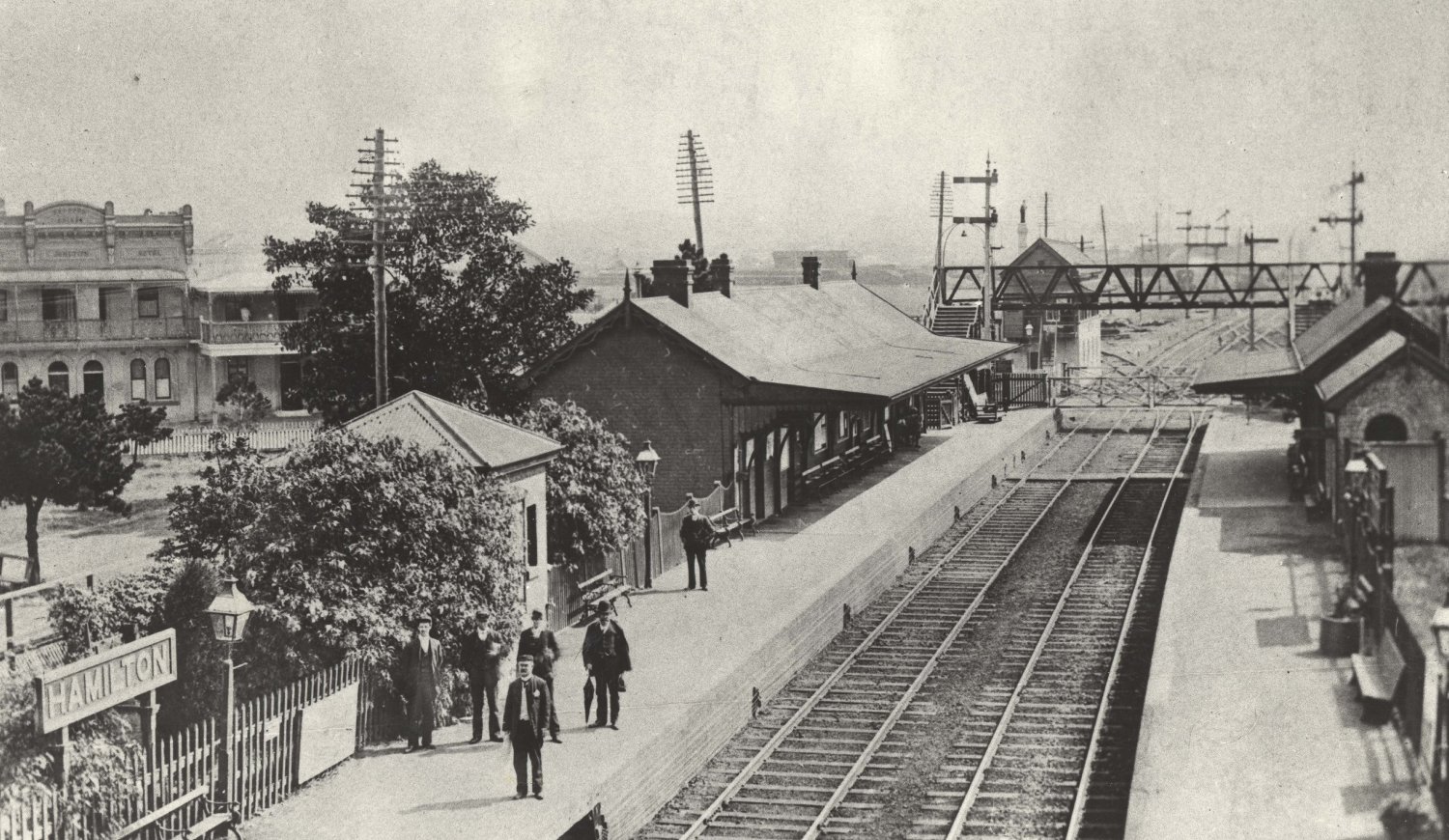
This included the city of Hamilton, who pledged $100,000 if the railway would run along Beach Strip, which they were developing as a recreational site. Towns along the proposed routes gave up large bonuses to be selected as stops along the line. In March 1872, the Hamilton and North-Western formed and announced their intention to build this second route, running from Hamilton to Barrie with a branch to Collingwood. The line split a short distance north of the station at Allimil, with the mainline running to Barrie and a branch-line to Collingwood. Hamilton and North-Western Beeton was a stop on the Hamilton and Northwestern Railway. Customers along the line accused the company of price gouging and there was considerable demand for a second route. The Ontario, Simcoe and Huron, by this time known as the Northern Railway of Canada, had built up a lucrative route for shipping wood and grain, first from southern Lake Simcoe and later, Collingwood which offered connections to the upper Great Lakes. The H&LE reached Jarvis in 1873, and then stalled at this point only a short distance from their goal.

The cost of driving the line up Hamilton Mountain forced the company into bankruptcy and they were taken over by the newly formed Hamilton and Lake Erie Railway (H&LE) in 1869. The company did not officially charter until 1853, and another decade before construction started. There had been some work on a Hamilton and Port Dover Railway as early as 1834. By 1860 it seemed that Toronto was winning this race the Great Western Railway, Grand Trunk Railway and Ontario, Simcoe and Huron Railway all met at its waterfront.

Through the middle of the 19th century, the growing cities of Hamilton and Toronto were in a constant battle for resources in order to establish themselves as the industrial capital of Upper Canada. Short sections remain in use to this day, and a section in the middle is now part of the South Simcoe Railway. The mainline from Hamilton to Barrie closed in sections during the 1980s. The northern section from Collingwood to Creemore remained in freight service until 1960, and the section from Alliston to Beeton until 1990. The H&NW's Collingwood branch was considered sub-par and the subject of jokes, but it was not until 1955 that CNR finally received permission to stop daily service along it. With the CNR takeover, the railway now had two routes into Collingwood. The value of this route made them a takeover target, and the entire network was purchased by the Grand Trunk Railway in 1888, eventually becoming part of the Canadian National Railway (CNR) in 1923. Flush with cash from the merger, the new company built the Northern and Pacific Junction Railway to the CPR at North Bay in 1886. Both railways saw their ultimate role as a connection between the Toronto area and the newly completely Canadian Pacific Railway (CPR) mainline across northern Ontario. To everyone's surprise, in June 1879 the H&NW merged with its supposed competitor to become the Northern and North-Western Railway. The entire line was officially opened in December 1879, although it had been operational for some time at that point. Major construction began in 1876, officially reaching Barrie on 1 December 1877, and Collingwood in 1879. Construction began in 1874 but economic troubles delayed it for the next two years.

Towns along the H&NW route put up bonuses for construction in the hopes that it would lead to lower prices. The H&NW was formed to compete with the Northern Railway of Canada, which ran from Toronto to Barrie and then onto Collingwood. Through the purchase of the Hamilton and Lake Erie Railway, the route continued south from Hamilton to Port Dover on Lake Erie. It ran north from Hamilton on the western end of Lake Ontario to Collingwood on Georgian Bay and Barrie on Lake Simcoe. The Hamilton and North-Western Railway ( H&NW) is a former railway in Ontario, Canada. Northern and Northwestern Railway, Grand Trunk Railway, CNRĤ ft 8 + 1⁄ 2 in ( 1,435 mm) standard gauge


 0 kommentar(er)
0 kommentar(er)
